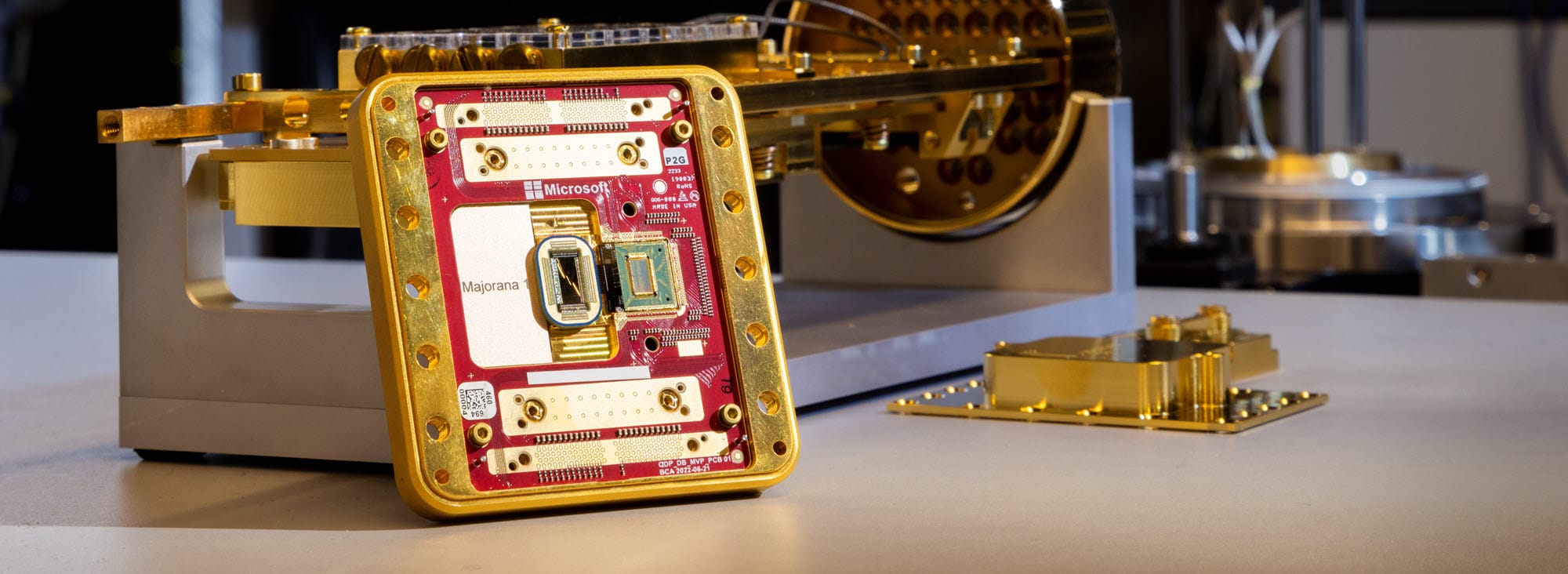Microsoft’s Majorana 1: Pioneering a New Era in Quantum Computing

Microsoft has just unveiled Majorana 1—the world’s first quantum chip powered by a groundbreaking Topological Core architecture. This innovation isn’t just an incremental improvement; it marks a paradigm shift in the way quantum systems can be designed, scaled, and ultimately applied to real-world challenges. Below, we dive into the technical details that make Majorana 1 such a transformative development.
A New Material Frontier: Topoconductors & Majorana Particles
At the heart of Majorana 1 lies a novel material called a topoconductor. This breakthrough material enables the observation and control of exotic Majorana particles—quanta that can inherently protect information by hiding it in their topological state. By leveraging these particles, the chip achieves a robust form of qubit that is:
• Error Resistant by Design: Built with intrinsic hardware-level error suppression.
• Scalable: Designed to eventually support up to a million qubits on a single chip.
The topoconductor material is engineered from a carefully crafted stack of indium arsenide and aluminum, deposited atom by atom. This meticulous fabrication process is essential for coaxing Majorana particles into existence and maintaining their stability, even as the chip scales up in qubit count .
The Topological Core Architecture
Microsoft’s approach rethinks quantum chip design from the ground up:
• Innovative Qubit Layout: The chip uses a unique design where aluminum nanowires form an “H” pattern. Each “H” hosts four controllable Majorana particles that collectively form one qubit. This tiling layout not only simplifies scaling but also maintains the coherence required for complex quantum operations.
• Digital Control and Measurement: Instead of relying on finely tuned analog controls, the Majorana 1 employs digital measurement techniques. Voltage pulses, acting like light switches, turn the measurements on and off. This method is so precise that it can detect minute differences in electron counts, ensuring robust control over each qubit .
• Integration with Classical Systems: The chip isn’t a standalone device. It’s designed to work in concert with control electronics, dilution refrigerators (to maintain ultra-cold operating temperatures), and a comprehensive software stack that bridges AI, classical high-performance computing, and quantum algorithms.
Industrial-Scale Potential
The implications of this technology extend well beyond laboratory experiments. By targeting a design that can scale to a million qubits, Microsoft aims to tackle complex industrial and societal problems:
• Materials Science and Chemistry: From breaking down microplastics to designing catalysts for pollution control, the enhanced computational power could revolutionize how we approach chemical and material challenges.
• Engineering and Manufacturing: Imagine self-healing materials that automatically repair damage in critical infrastructure like bridges or aircraft—a possibility enabled by precise quantum simulations.
• AI and Beyond: The integration of quantum computing with AI opens up pathways where one can simply describe a desired material or molecule in natural language and receive a high-fidelity design recipe as output.
This quantum leap has also caught the attention of the Defense Advanced Research Projects Agency (DARPA), which has invited Microsoft into the final phase of its Underexplored Systems for Utility-Scale Quantum Computing (US2QC) program. Such recognition underlines the potential for Majorana 1 to serve as the bedrock for future utility-scale, fault-tolerant quantum computers .
The Road Ahead
While Majorana 1 represents a significant milestone, Microsoft acknowledges that integrating all the elements—from the innovative material stack to digital control methods—will require further engineering finesse. Nevertheless, with eight topological qubits already demonstrated on the chip, the company has laid out a clear roadmap towards the million-qubit goal.
In essence, Majorana 1 isn’t just about building a faster or more stable qubit; it’s about fundamentally reimagining how quantum computers can be built, controlled, and scaled. This breakthrough offers a glimpse into a future where quantum computers are not only viable for industrial applications but are also seamlessly integrated within existing computing ecosystems like Azure Quantum .
Microsoft’s Majorana 1 stands as a testament to the power of innovative materials science and bold engineering. As we move closer to a future powered by scalable quantum systems, the ripple effects of these advances promise to transform industries—from healthcare and manufacturing to environmental science—unlocking solutions that were once deemed impossible.
Also check Microsoft's post on Majorana 1
